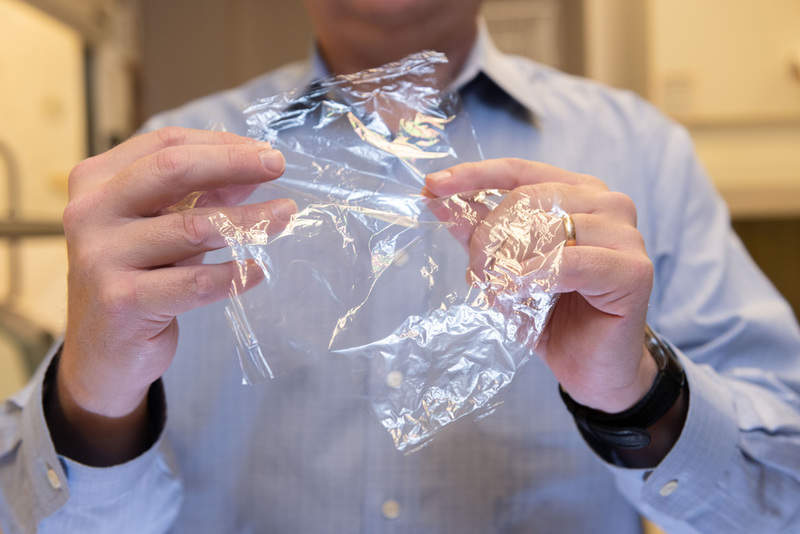While there can be few companies that don’t recognise the importance of the issue of packaging waste, their choices are still largely dictated by cost and profitability.
New more sustainable alternatives to standard plastic packaging are coming onto the market daily, but they tend to carry hefty price tags.
A recent launch is Carapac, a biodegradable plastic made from crustaceans.
Carapac has a number of advantages over conventional plastics.
It is manufactured from waste from food processing plants and therefore does not require resources from the environment. It also has natural anti-fungal properties that make it ideal for packaging fruit and vegetables – extending their shelf-life by seven days in comparison with existing single-use plastics. The packaging can be disposed of by throwing it in the garden, where it biodegrades within six weeks, with the added benefit that it acts as a slow release nitrogen fertilizer in the soil.
But this comes at a price – Carapac is three times as expensive as standard plastic, and although this is considerably cheaper than some biodegradable packaging (which can cost up to five times the price of traditional plastic), it could prove a barrier to uptake.
How well do you really know your competitors?
Access the most comprehensive Company Profiles on the market, powered by GlobalData. Save hours of research. Gain competitive edge.

Thank you!
Your download email will arrive shortly
Not ready to buy yet? Download a free sample
We are confident about the unique quality of our Company Profiles. However, we want you to make the most beneficial decision for your business, so we offer a free sample that you can download by submitting the below form
By GlobalDataHowever, as environmental campaigners – from the almost establishment Green Party through to the Extinction Rebellion guerilla activists – testify, the environment has reached a tipping point, and we can no longer afford to use the conventional measure of cost as the determinant of our futures: this has the potential to cost us the earth.
The time has come for the Sustainability Report produced annually by most companies to become the core of the company’s business, not a separate document.
The cost of transporting and disposing of waste (including recycling costs) need to become a key part of the equation.
The long-term effects of our activities on the oceans, land and air must be allocated an economic cost, as first postulated more than a decade ago in the Stern Review (2006). If the economic impact of not acting now appears on the balance sheet, it would create a more level playing field for the new alternatives to fossil fuel-based plastics.






Related Company Profiles
The Sustainability Report
Carapac